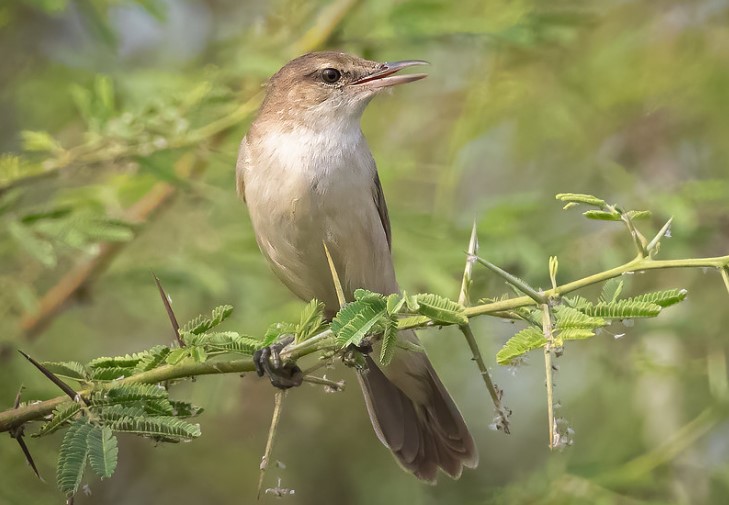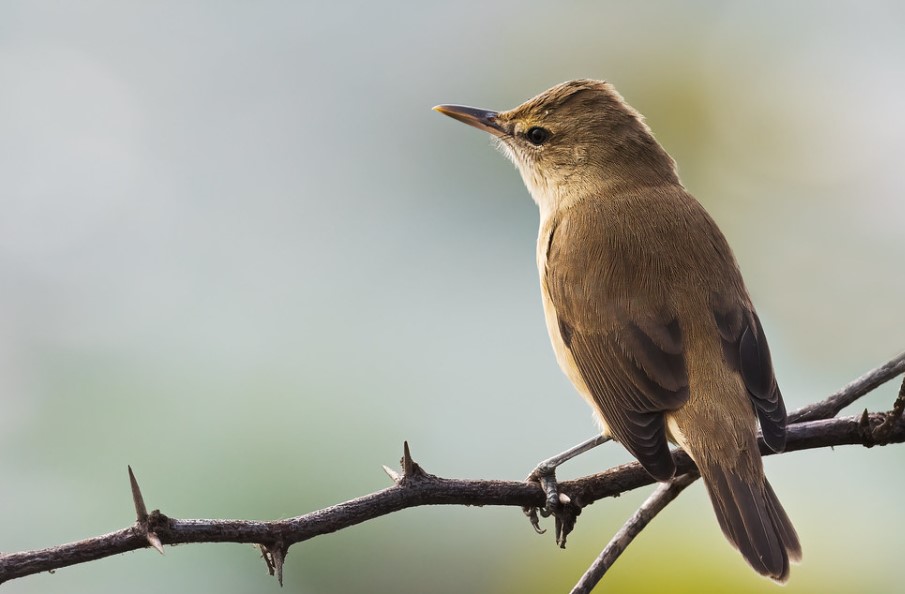The Clamorous Reed-warbler (Acrocephalus stentoreus) belongs to the genus Acrocephalus. Clamorous Reed-Warbler arrives in spring to breed in the freshwater swamps of southern Australia, bursting from their winter silence with spring song. Most birds migrate north then, to northern Queensland and the Kimberleys, a movement optimized for their pointed wings. Some birds stay and skulk in the reeds over winter.
On bore drains through the Lake Eyre basin, they move south along the brakes of cumbungi Typha, returning in September-October. During October-November and December–January, there may even be two waves of migrants breeding in the southwest. The males sing ceaselessly at breeding quarters throughout the night and day in winter, nearly silent.

Five pairs may live on a fraction of a hectare of reed bed—0.15 hectares of reed bed may sustain five pairs-and they may be forced to sing constantly to maintain these territories. As they puff out their throats and raise their crown feathers, singing birds perch on stems. Insects and small aquatic animals are their primary food sources, although they live completely within the cover of reeds. In-flight between banks of reeds, the bird flutters low and undulatingly. As with most warblers, the clamorous reed warbler feeds on insects, but will also take small prey items.
There are several names for this bird, including Australian Reed Warbler, Reed Warbler, Long-billed Reed-Warbler, and Reed-lark.
Clamorous Reed-Warblers measure 160–170 mm in length. There are no differences between sexes among adults. Its head and upper parts are plain tawny-brown; its flight and tail feathers are darker brown; it has pale buff eyebrows; its throat is dull white; the rest of its underparts are plain pale buff; its flanks are cinnamon-orange; and it has brown eyes. Brown on the bill, buff on the bottom. There is a dusky color to the feet. IMMATURE, dark brown; shore crest.

Clamorous Reed-Warblers call loudly and sharply in alarm. It also rattles scolding. With many variations, a rich, persistent, metallic tutch-tutch-tutch-dsee-dsee-quarty-quarty-quarty. Typically, acrocephalic whistles and mimicry are added to this slow, chattering kereet-kereet.
During the months of September through February, birds nest and breed. A deep cup of reeds and rushes woven together; lined with fine grass and feathers, placed crosswise; firmly attached to two or more upright reeds or to drooping willow stems.
Approximately 20 x 14 mm, long-oval and pale blue to buff in color, freckled and spotted with brown and lavender. Females incubate for approximately 14–15 days. Fourteen to sixteen days after hatching, the young fledge.
In freshwater swamps all over Australia, reeds and rushes grow. To southern Asia and northeastern Africa are also New Guinea and Indonesia. In Australia, there is only one race out of 15 races. Read More – Olivaceous Warbler (Hippolais pallid)
